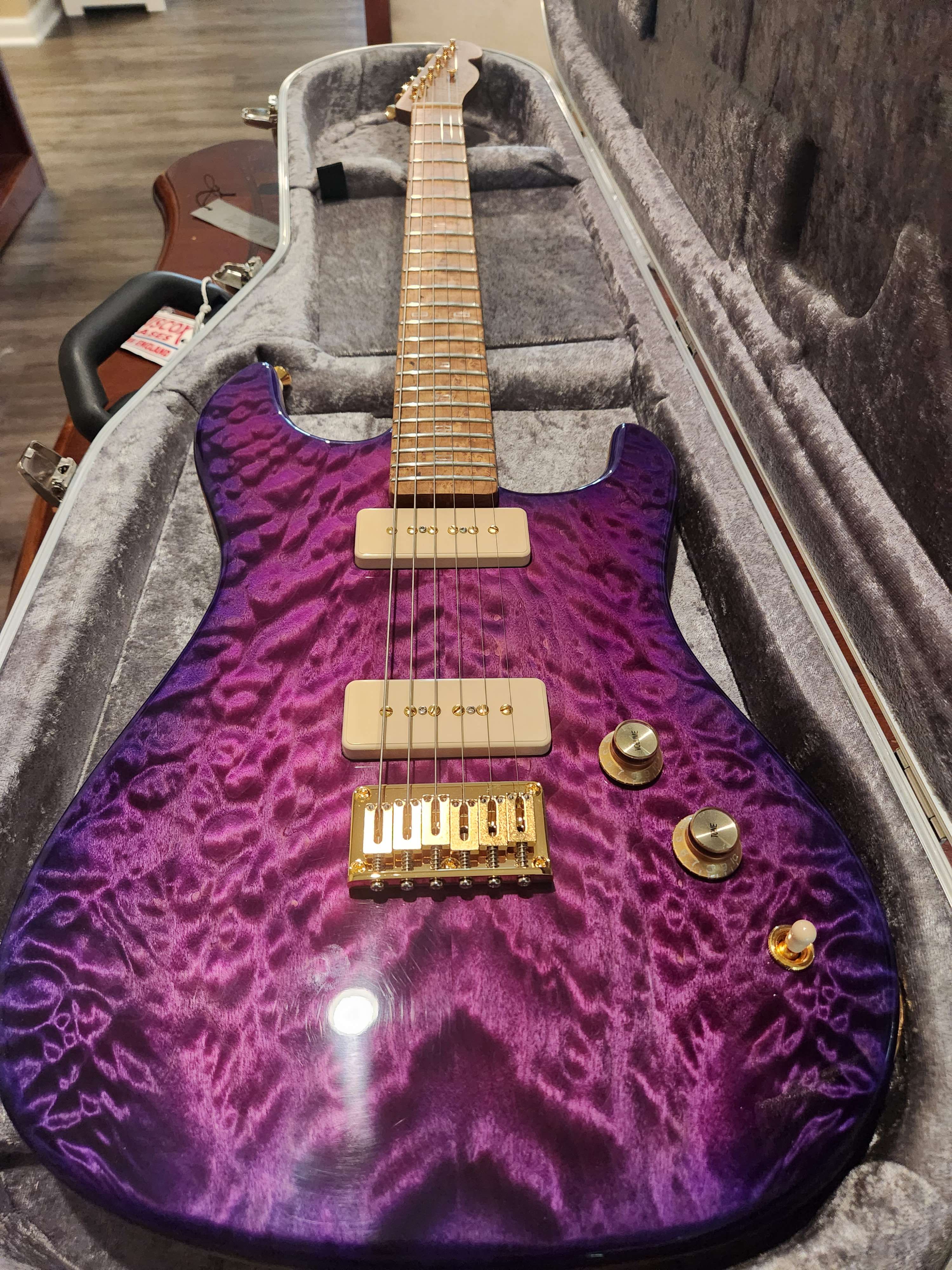Is this before or after they reach the spicy pillow stage?
The trick is to let them apply this heat themselves.
I think before, but there’s a trick for spicy pillow just poke a vent hole, trust me I was in IT for 6 years ;p
i was just thinking i could use an excuse for some skin grafts
Wait, nobody came up with this before?
Important note near the end of the article - they aren’t saying we should cook batteries really -
“The team’s hypothesis is that the structural disorder developing inside LIBs may become a “tunable parameter” that, if tweaked using chargers at precise voltages to alter said battery composition, could be used to rejuvenate the batteries in our tech without fires.”
This is a good old idea that goes back to the days of desulfating lead batteries with powerful shocks of high-amperage current. Might just need a special Healing Charger that applies the right voltage/current to dissolve the bad crystals in lithium-ion systems
With electric cars you might not even need a special charger so much as a special charging cycle. Its already the norm for cars to tell the charger what voltage and current they want, and its already the norm for cars to carefully control their battery’s temperature during charging.
That’s not to say you’d necessarily be able to do this with just a software update, but its not too far off from the current paradigm.
Yeah that’s a good point. Ours uses the same refrigerant system as the AC to cool the battery, and the actual “charger” for the battery is inside the car being controlled by its software etc. The cables that plug in on the outside are technically just power wires, with the charging brains inside the car. That would be amazing if they could update the software to rejuvenate the battery once a year or something.
it would almost certainly need to be done at a fast charger, not at home unless it could do only a few cells at a time. Remember the golden rule: “Don’t set the house on fire by overloading the wiring”.
Well, there is some data/rumours out there, stemming from a Dutch Tesla forum, that suggests that some fast charging might be beneficial for battery longevity. This seems to corroborate that. I can’t remember the case for always fast charging, though.
Oh God I can already see all the questionable “Restorer Chargers” and the like from Temu that will be more likely to burn down the house…
I remember recovering dead 18650 cells from laptop batteries and “restoring” them with a 12V modded PC PSU. Quite a few of them actually started working again and had some capacity for a few tens of additional cycles. Those cells were never left unattended in a charger and they were always only used in a device you could chuck in a moment’s notice.
10/10 do not recommend.
How did that process work? Did you just connect the +/- ends of the cell to the +/- 12v wires of the PSU and let it feed from the high-amp outputs? Imagine there’s plenty of amps on the GPU and CPU power wires
Yup, just plugged it in there. The internal resistance of these cells was high enough that it limited the current somewhere between 3-8A. And this was done only briefly as these cells got quite…warm.
I tried it on my car but it doesn’t turn on anymore. Deceiving news

Sounds like a 4chan prank, but… 🪦
This turns everyone else on, though.
Who greenlit this article ?
Sounds like a horrible idea if not carefully controlled. Perhaps up to 80 degrees in an oil bath could redissolve some of the electrolytes. I guess it could work. Anything above 100 is asking for trouble.
80 degrees what?
See, this is where the problems begin.
heat to 80K…oh wait
How is the boiling point of water relevant to something that’s made of plastic and metal?
Well the electrolyte solution is water based so exceeding the boiling point will cause pressure buildup inside.
Edit: hmm seems I might be generalizing too much. Not all batteries use water based solutions. My point is that you should avoid a pressure buildup inside the battery due to reaching the solvents’ boiling point.
Good point. It’s highly concentrated inside a battery if not saturated. Hmm. I still wouldn’t expose them to such high temperatures.
Perhaps a longer duration at lower temperature is safer. I might try it some day with some waste batteries and a battery tester.
wha wha what
no, it’s an organic solvent like ethylene carbonate/propylene carbonate + some other stuff, which have a boiling point of 230+°C ( 446°F)
heating up batteries is (mostly) fine (under controlled scenarios with known good batteries, spicy pillows can always happen with bad batches) as long as the plastic holding them together doesn’t melt
you physically CANNOT make a lithium ion battery with water because lithium reacts with water
from the wikipedia page
Lithium reacts vigorously with water to form lithium hydroxide (LiOH) and hydrogen gas. Thus, a non-aqueous electrolyte is typically used, and a sealed container rigidly excludes moisture from the battery pack. The non-aqueous electrolyte is typically a mixture of organic carbonates such as ethylene carbonate and propylene carbonate containing complexes of lithium ions.[45] Ethylene carbonate is essential for making solid electrolyte interphase on the carbon anode,[46] but since it is solid at room temperature, a liquid solvent (such as propylene carbonate or diethyl carbonate) is added.
So you’re saying I SHOULDN’T preheat my toaster oven to 425F???
UH-OH!!!
brb. Gotta put out some fires.
In the good ol’ days when I ran out of battery and every charger had a different stupid little connector, I often put my phone on the window still or heater to get a little bit of juice to do what I needed to do.
I guess I am a scientist.
Wow, this brought back memories of me rubbing my hands against my old Nokia battery in middle school to heat it up and get a couple extra %.
We did the opposite, put it in the freezer
IIRC freezing accelerates the chemical degradation of lithium ion (especially if you attempt to charge the battery at the same time) and tends to lower both the voltage and amperage of most battery chemistries, but it seems plausible that this might
- temporarily defeat a cell protection circuit, allowing a charging procedure to initialize, or
- delay a thermal failsafe cut-off of a damaged cell long enough to boot or charge a device
Regardless, for those tuning in at home, best to keep your batteries out of the freezer, especially lithium types, unless spicy pillows are what you’re after.
Oh, sorry, since we were talking about the good ol’ days I thought it was implicit I wasn’t talking about lithium batteries
Ah! Yeah it’s been a while but I seem to recall seeing alkaline batteries in a some freezers or refrigerators sometimes when I was a kid, along with other curiosities like rolls of film. No one ever explained why.
rolls of film
Oh right, those were stored in the fridge… weird to think about it.
this feels like bait
In reality, this doesn’t affect the existing batteries we have, it’s just for future battery technology.
This title is pretty bad, the paper focus is in designing new battery technologies not magically restoring capacity on the batteries we have today.
Is the paper in the article? I couldn’t find it.
Would you be so kind as to link us?
it is this one: https://www.nature.com/articles/s41586-025-08765-x
Reminds me of the old days of putting my LG G4 in the freezer
For me that was not so long ago. I still used an LG G4 as permanent car navigation until a year ago or so. I’m still surprised that one didn’t end up bootlooping.
Why’d you put it in the freezer if it wasn’t bootlooping? Just like cold phones?
Well it was my 4th LG G4. Four times a charm I guess.
Neat! So if I put my phone in the microwave it will reset the battery?
Only if you want it soggy, air fryer works better
So is a toaster the new wireless charging hub?
I hope this article is well peer-reviewed. Otherwise this reads as if some LLM came up with the idea
Otherwise this reads as if
some LLM4chan came up with the ideaRemember kids, updating to iOS 7 enables your phone to charge wirelessly in the microwave.
The “peer” that reviewed it was another LLM.
Well if it was a human it wouldn’t be a peer, would it
Connection reset by peer.

so putting batteries in the fridge wasn’t useful after all, we should put them in the oven
Putting my LG G Flex which had a boot loop problem due to a soldering issue on the battery solved the problem temporarily!
Edit: oh also that was the freezer
I’ve known some old people to put their bootloops in the freezer because they think it won’t go stale as fast.
so I can now put my spicy pillows in the oven and tell the insurance men the internet told me to?
Sure. But we need to see pics, or it didn’t happen.
The abstract doesn’t mention them re-gaining their old capacity. It only says they shrink. And something about voltage. So I have my doubts. I mean it’s nice if my spicy pillow shrinks a bit. But what does that help if it continues to stay nearly dead? And an application in products would be hard to accomplish. At that temperature, all the plastic etc is going to melt. Maybe the solder as well.
Yes. If you aren’t reading any battery tech article with a huge amount of skepticism you are doing it wrong. More than any other tech sector I can think of, battery research is just absolutely plagued with low quality research that consistently gets picked up by media outlets.
Hmm, you’re right. At a guess, this field might represent the maximal combined interest of both scientific and pedestrian readership within technology research, since on the one hand energy density and storage logistics is the key limitation for a ton of desirable applications, and on the other most consumers’ experience with batteries establish them as a major convenience factor in their day-to-day.
Edit: you’re*
It might be less the quality of the research and more this:

(This comic is a bit outdated nowadays, but you get the idea).
Except the headlines say “scientists report discovery of miraculous new battery technology using A!”.
Also i think people don’t realize how long it takes to commercialize battery technology. I think they put them in the same mental category as computers and other electronics, where a company announces something and then its out that same year. The first lithium ion batteries were made in a lab in the 1970s. A person in 2000 could have said “I’ve been hearing about lithium ion batteries for decades now and they’ve never amounted to anything”, and they would be right, but its not because its a bunk technology or the researchers were quacks.
All true, but I am going to be that nerd and point out that there were indeed commercial devices with lithium ion battery packs in them in the mid to late '90s, especially so in the late '90s. By 2000-2001 you couldn’t escape the damn things in cameras, disc players, PDAs, etc. So yes, it did take relatively forever for the technology to become commercially ubiquitous, but not that long. (And yes, the first couple of waves of Li-Ion batteries were indeed crap, and had all of us geeks clamoring for gadgets that still took AA’s for a while.)
brb chucking my batteries in the oven
it’s a cheap and easy thrill
















